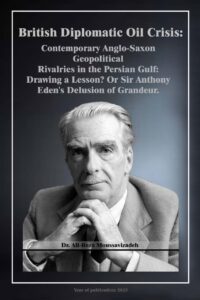The British Imperial Establishment, Post Imperial Era, and the ‘Churchillian’ World View, 1945-2016. (Adjustments & Challenges in Contemporary British Diplomatic Strategy)
48
steel and
coal, other metals such as copper, lead, zinc and tin were also gaining
intrinsic value, with the Empire
again yielding up great wealth in the twentieth
century. But as Britain failed to take advantage of some of
this wealth before the
1914-18 war, Belgium and Germany bought Australian lead and zinc
concentrates and
the United States Canadian nickel. Germany also processed
tungsten reserves from Burma, Australia and Malaya.
The war showed Britain
the folly of this neglect and increasingly in the 1920s and 1930s
British
industrialists bought directly from colonial producers rather than from German
and other
intermediaries. The British also became more active in the exploitation
of empire wealth, such as Northern
Rhodesian copper.
Britain
had not, however, neglected the values of Malaya’s tin which
dominated the world market and she was
successfully exploiting this both before
and after the war. The main mineral deficiency throughout the empire
was in oil
products and iron ore, but Britain’s interest in the Middle East in the twentieth
century
was designed to counteract the oil problem. In the case of Britain’s
exports, again the looked more
closely to the empire as her main outlet, since
foreign markets were being lost either by her being shut out
or because she failed
to meet foreign competition. By the 1930s the empire was becoming the vital
outlet
for her industrial goods. “India was the main buyer, followed by Australia
although South Africa made a
temporary surge in the 1930s. The main foreign
buyer was the United States. The closer empire tie for British
exports was not,
however, reciprocated by the individual colonies.”24 Canada, for example, was
more dependent upon the United States than upon Britain
for her manufactures.
Ceylon together with Australia in the twentieth century obtained more of
their
imports from sources other than Britain. Moreover, some of the West Indies
islands were also
choosing American suppliers over British. During the twentieth
century as it progressed more and more well
established economies kept cutting
down Britain’s share of their imports, while there was generally some
increase in
Pages: 1 2 3 4 5 6 7 8 9 10 11 12 13 14 15 16 17 18 19 20 21 22 23 24 25 26 27 28 29 30 31 32 33 34 35 36 37 38 39 40 41 42 43 44 45 46 47 48 49 50 51 52 53 54 55 56 57 58 59 60 61 62 63 64 65 66 67 68 69 70 71 72 73 74 75 76 77 78 79 80 81 82 83 84 85 86 87 88 89 90 91 92 93 94 95 96 97 98 99 100 101 102 103 104 105 106 107 108 109 110 111 112 113 114 115 116 117 118 119 120 121 122 123 124 125 126 127 128 129 130 131 132 133 134 135 136 137 138 139 140 141 142 143 144 145 146 147 148 149 150 151 152 153 154 155 156 157 158 159 160 161 162 163 164 165 166 167 168 169 170 171 172 173 174 175 176 177 178 179 180 181 182 183 184 185 186 187 188 189 190 191 192 193 194 195 196 197 198 199 200 201 202 203 204 205 206 207 208 209 210 211 212 213

